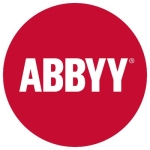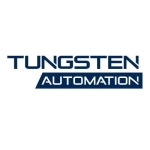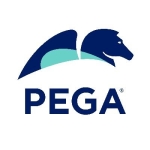What is our primary use case?
My company' objective in using this tool is to automate every rule-based operation possible. We're looking forward to automating anything that does not need a human to make a judgment call. We have automated most operations in several applications, including mainframe, Linux, web-based URLs, Citrix automation, and in Excel extensively. We have done a variety of projects but we are looking forward to growing more into other areas that we have not yet explored.
The biggest value that I see from the product is the way it works in general. The unattended mode that Automation Anywhere promotes, works great. That is the best thing, I would say. It runs code that performs on a virtual machine unattended. No one gets involved in the triggers because the bot controls the tasks. When you use a person to manually monitor a task, such as getting a quality check done, automating the task to work unattended eliminates all the human effort. It's a solution that is quite simple and straightforward to implement and is available 24/7, 365 days. No disaster recovery is required as the server is always intact because processes run to assure uptime, security, etcetera.
We are aiming to have 100% unattended runs. We don't want attended runs because it increases bandwidth which is not great for support guys and clogs the system. Also, you can have some unattended InfoSec (Information Security) breaches and things. We constantly aim to have the best. At the moment performance is not 100% but I would say it is constantly improving.
How has it helped my organization?
Automation Anywhere has helped our organization to operate by working on AA-level development without all the trouble of having VMs set up, setting up ports for it, having the environment so that the developers can work on it, etcetera. With Automation Anywhere, I don't think we need a technical guy, an IT guy, or specifically a specialist engineer to accomplish things. Automation Anywhere is that good. A layman who has a keen interest or even a little bit of curiosity can learn the product end-to-end, sustain himself if he wants, learn how the VM is developed down by the ports. The product and support make it easy to learn. The knowledge is readily available.
What is most valuable?
The whole package that Automation Anywhere offers is really good. The variety of commands that it offers made to play well with other integrations. It could be using a C# module, code on JSM, the APIs — I want to use database XM. Ultimately, I want to use anything that makes it friendly for me to accomplish what I need to. That is a help because it often will be something I have already learned, it will be easy to access, easy to build, easy to sustain — as long as the commands work as expected.
Unattended Automation is the best feature for me. Because I use it extensively, it is also one feature I am very familiar with and so it is also one of the areas that I would like to see more improvements on. Any time I speak with people who promote automation and say that it is unattended, they may have a machine perform an operation. Very few understand that each unattended operation packet is unattended at all times. No matter what time of the day, if you just click Run once and it operates to get something done. You don't continuously relaunch it.
What needs improvement?
In my current role, the only thing that I focus on is how sustainable the code is. It has to run for a long time — years. I am expected to run extensive testing. So, in this position, I'm working on the current stability of all the commands and how that can play into the future. I'm not looking for new features. Really the opportunity for automation is already offering this opportunity to create your own features. Adding new features is almost too much. If I've got enough tools to use, I should learn to utilize them first. Use them and then maybe get something new once I have exhausted the possibilities. There are already enough options that AA provides to use. The commands that it offers out of the box are okay for people to begin to work with it. If you don't know it, all you have to do is ask.
It is not an end-to-end solution for everything, but it is very good at what it does with allowing automation and freeing up other resources — both human and hardware. It is not an end-to-end solution for everything.
The only area for me that I would consider as an improvement is sustainability in areas I face every day. On CSM (Central Management System), for the most part, it works every time, but those areas exist where it does not perform as expected. For example, we had a problem with our ticketing system. What we do is we have a ticket open so that the issues stay open for a week even if we have it fixed. It is supposed to stay in the system continuously for a week — a hyper-care period — so that the issue stays open and we are sure the issue is fixed. That hyper-care period never seemed to end in the application. The problem was it extends a week, to two weeks, to three weeks, but we did not achieve that four-week period of no error of the full runs for the solution.
We worked at resolving the issue and thought we fixed it permanently. We locked in the solution. We were happy. We almost won. Then in a week, we had a reversion to the same problem without making a change. It was not possible to explain. It is my only concern that some things get handled erroneously or changed.
What do I think about the stability of the solution?
Without question, Automation Anywhere is generally a stable product. It's not like I can bank on it always performing. I know a few bots we created are not perfect, but I also know that most of them — 60% of my bots — are good. No one calls me about them from the time they're deployed. I haven't had a single escalation or a single error reported about them. This is great.
I still have the other 40%. I think some things go wrong in situations you face unexpectedly or an error occurs. This is not the way it is supposed to be. It's supposed to be really easy: just plug it in and you have the service. But it doesn't work sometimes.
It is frustrating at times to experience this instability, but we do find a solution and we are working on it to be better. With the new version and features that AA is proposing, it looks promising that we can achieve that goal. It looks like the new version will be really stable compared to the version I am currently in, but I will never be sure until I use those new versions.
Another form of stability is in upgrades. Currently one of the pain-point areas on my to-do list is migration to 11.3.2. We have been working on it for almost a month now. We haven't reached the deployment stage. When I migrated to 10, I had some bots that no longer worked after the upgrade. It was not expected. We got on a call to support to explore the problem and had to resolve them.
Right now, I'm not really sure when to migrate. We have 50 bots and every fortnight, there's a part that goes wrong. If I have to take the action and migrate into a new platform — 11.3 2019 A — there is something of a leap of faith. I'm really not sure that I can take that leap now considering the relative stability that I'm experiencing at the moment.
Working with Automation Anywhere, I have been taking steps to use more of the functionality in the product. In a migration, I will want to use the new version as extensively as I have used the current version. At each step, the newer versions were better than what I have used in the past and I have used version 8, version 9, and now version 10. I've used these three versions and there have been improvements each time. We're seeing improvements to come, which I'm looking forward to exploring. But we have to be sure the migration point is realistic.
A lot of times that I have raised issues with support, the command in question is simply not performing. Object learning may not be working as expected, an action's not executing or it is not connecting to the database at all. The simplest solution is often to copy basic commands and replace them and it works. With the number of calls I made to Automation Anywhere, the guys know me now because I have so many issues. They work with me on it. We try to find solutions. At the end of the day, we find some way or other — a shortcut, say, or copy and paste — and get the code to work. We may not be able to figure out the root cause as an answer so that it doesn't happen again. The bottom line may be that the code might be corrupted, my part of the implementation is corrupted, the ATMX (Automation Anywhere Task Files) part is corrupted, etcetera. But the patches are not a perfect solution when I'm in charge. It's a lot to know a process well enough to fix the root cause of an issue. But these concerns remind me that Automation Anywhere as a tool is great, but there are areas to improve.
What do I think about the scalability of the solution?
Automation Anywhere is definitely scalable in several ways. It's easy and accessible. It's designed the best — almost perfect. It has many more usable components than I was familiar with, and I had so much to learn. Now, with some experience, it is not foreign, and we just don't need to build to get what we want. But to get that you need to start at the design phase, you should not start at development at all. People try — even me — when you're starting, just to aim at building usable components. We can ask a developer to do that, but then the developer will not design to build a reusable component. It will only be specific to his assignment, the development, his process, and he will get it done to complete the job.
Scalability starts with a designer who is the one who makes the call. They need to know what to standardize or how to do things by thinking globally to make sure that a resolution is usable and adaptable if desired. That is the standard we adopted. Other big companies have more bots compared to our 50. They may think what they have is a lot more scalable than it is.
How are customer service and technical support?
We have ongoing support from AA. I appreciate Automation Anywhere support when I talk to them. There are quite a few hiccups as we go along. At times I don't get straight to the support people when you need them as they are busy supporting other users. But the response has been great.
How was the initial setup?
The setup is a bit complex but it is not so bad if you are a little interested and a little curious in learning about the product. It helps to have a little background knowledge on how it works, what are the features that you need to look for, what logs you need, etcetera.
Some basic guidelines will help you along in the initial setup — a basic brush-up on what to do and expect can suffice. Of course, there is the AA's guide that you can follow if you don't know what to do. Initially, when we didn't know the server, we didn't know what are the application calls were, the documentation did help. It was not that complex to do the installation, but the IT guys did not support it. They were surprised I wanted to learn about everything and work with another product when they had resources to accomplish what was needed.
If you choose to try it out, when you need to know more, ask for help. If you're ready to set up deployment, start from some base and set a restore point.
What other advice do I have?
For those who are considering Automation Anywhere as a solution, I would ask how good their team was already. To take on a new product and take a chance that people will try to enhance their skills by learning it may not be the best course of action. Many will have to learn something new and do better than they did with previous solutions by learning and using AA. If the response is that they have hardcore developers, web designers, C# developers, etcetera. They may be looking for quick resolutions, hardcore development and coding bit. They will want any other product or UI that appears to give you far more than AA. AA does all of that — it is not that it isn't able to do it — but it's easy and it is different. With other solutions, you will need someone with that knowledge and ability to code in a particular language. But AA is a platform that can be used as an opportunity for people to up-skill themselves. That's something that is different compared to any other code.
AA commands are not the same as other languages. It has its own dictionary, its own library, its own way of working. I see that this is the same thing mentioned by others as to what they think about the product. It is possible to learn it by just using the Q&A.
Disclosure: My company does not have a business relationship with this vendor other than being a customer.

















